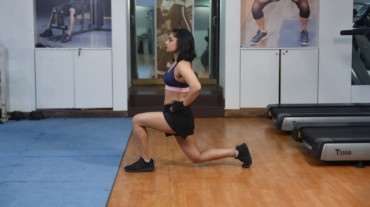
When you hear about strength training, what is it that comes to your mind first? A man with a brawny physique? Well, that is what misleads so many women to believe that strength training is not something for them or that they just can’t do it. But please be rest assured – strength training is gender agnostic! Just like everything else, you can do it too. In fact, adding strength training to your workout will not only help you become stronger; it also brings many other health benefits for you, dear ladies.
Also, read: Think women should not do strength training ? Fitness guru busts this myth
What needs to be kept in mind is that when it comes to strength training for women, it should include main movement patterns that are the backbone of strength exercises. And for guiding you in that direction is Sucheta Pal. A celebrity fitness coach, Sucheta reveals the basic movements for strength training and how you can practice all of them.
Here’s a lowdown on the seven fundamental movement patterns for strength training:
A push movement is the ability to move an object away from your body. The pushing movement pattern is about upper body pushing which is divided into two groups: horizontal pushing (think bench presses and push-ups) and vertical pushing (think overhead pushing like shoulder presses). Sucheta Pal suggested the same. Both of these use pushing muscles that include the shoulders, chest, and triceps.
Also, read: These are the 5 most common strength training mistakes, and we’re telling you how to fix them
A pull movement pattern corresponds to upper body pulling. This movement is the ability to bring an object towards your body. How can you do it? Well, try bent-over row and pull-ups. Just like push movement, pulling can also be horizontal and vertical, making similar muscle groups to get worked on.
Put simply, both push and pull movements are important so that you can have well-developed upper body muscles because these movements increase functionality, boost strength, enhance overall muscles development and reduce the risk of injury.
This may be your favourite go-to exercise and one that makes the most sense when it comes to a daily movement pattern. Squatting uses your quadriceps, hamstrings, glutes, calves, and abdominals. You can do various movements for squat patterns such as goblet squats, barbell back squat, and front squat. Why should you try this movement? Well, this is what you effectively do every time you sit down or stand up and if your form isn’t smooth, it can lead to muscle imbalance and pain. So my dear, train the squat!

This movement is here to save your back! Nearly 80% of the population will experience back pain at some point in their lifetime and most cases aren’t caused by a serious condition. The hip hinge movement, for example, Romanian deadlift, is the ability to bend at the hips while maintaining a straight spine. When this happens, you limit the pressure on your lower back, reducing your chances of back pain.
This movement pattern is also one of the most feared in the gym due to the risk of lower back injuries. So be mindful when choosing your equipment, see what works best for you.
Another fundamental movement pattern is the single-leg stance. Unlike the squat and hip hinge, this pattern involves the movement of one leg and requires more stability through the foot, ankle, knee, and hips. Although it isn’t used frequently in everyday life, it is a good pattern to practice. This is because it works to strengthen so many muscle groups at once and also helps with balance and stability – two important components of everyday life.

Sucheta Pal suggests trying a reverse lunge or step up.
Carry patterning is primarily considered core emphasized training in many strength training programs. This is probably the most functional and practical movement pattern of all of them. All it consists of is picking up a weight on one side of your body and walking with it while maintaining perfect posture. Examples of carries include suitcase carry and farmers carry.
In order to minimise the risk of injuries, the walk or run must be proper.
Sucheta Pal also included one more movement that will help in your strength training program – deep core stability system. It includes deep neck flexors, diaphragm, abdominal wall and pelvic floor. Dead bugs and heel slides are examples of the deep core stability system.
So ladies, make sure you or your trainer include these major movement patterns in your workout plan so that you are truly functionally fit!